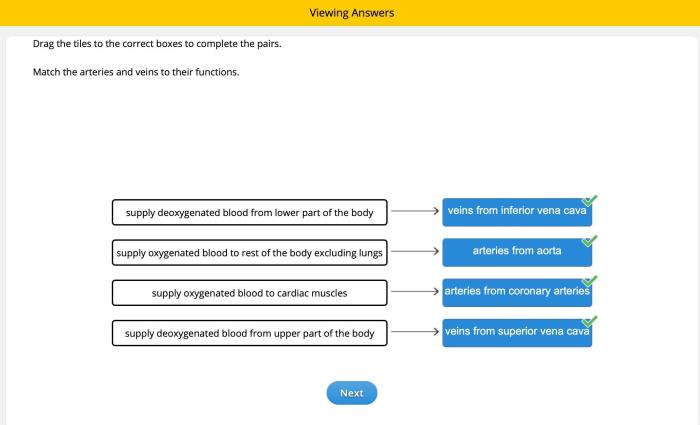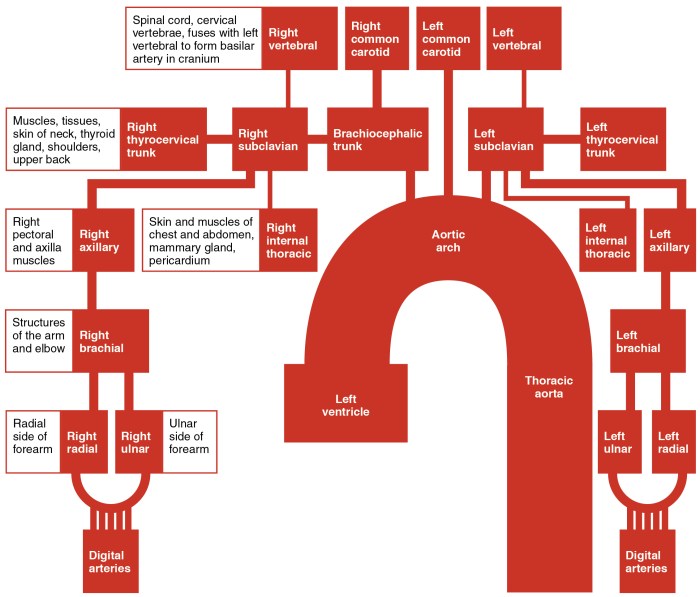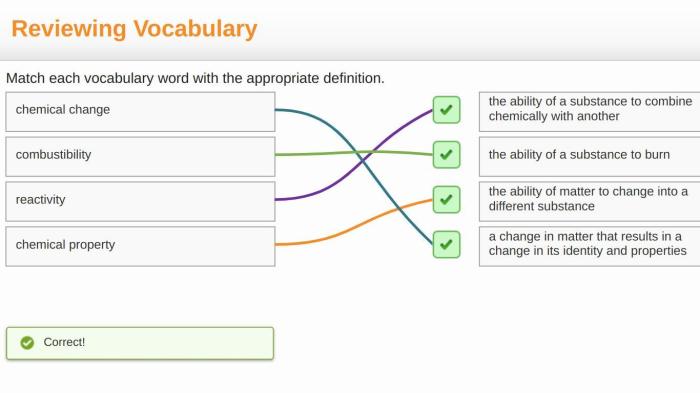In the realm of cardiovascular anatomy, match each of the following arteries with its correct description, we embark on a journey to unravel the intricate network of blood vessels responsible for delivering life-sustaining oxygen and nutrients throughout the body. From the carotid artery, the gateway to the brain, to the coronary arteries, the lifeline of the heart, each artery plays a vital role in maintaining homeostasis and ensuring the proper functioning of our organs and tissues.
This comprehensive guide will provide an in-depth exploration of the major arteries, their locations, functions, and clinical significance. By understanding the intricacies of the arterial system, we gain a deeper appreciation for the remarkable complexity and resilience of the human body.
Arteries

Arteries are blood vessels that carry oxygenated blood away from the heart to the rest of the body. They are distinguished from veins, which carry deoxygenated blood back to the heart. Arteries have thicker walls than veins and contain valves to prevent backflow of blood.
Some of the major arteries in the body include:
- Aorta: The largest artery in the body, which carries blood from the heart to the rest of the body.
- Carotid arteries: These arteries supply blood to the head and neck.
- Brachial artery: This artery supplies blood to the arm.
- Femoral artery: This artery supplies blood to the leg.
- Coronary arteries: These arteries supply blood to the heart muscle.
- Renal arteries: These arteries supply blood to the kidneys.
Artery Descriptions

Carotid artery
The carotid arteries are two major arteries that supply blood to the head and neck. They branch off from the aorta and travel up the neck on either side of the trachea. The carotid arteries supply blood to the brain, face, and neck muscles.
Brachial artery
The brachial artery is the main artery of the arm. It branches off from the axillary artery and travels down the arm along the inside of the humerus bone. The brachial artery supplies blood to the muscles, bones, and skin of the arm.
Femoral artery
The femoral artery is the main artery of the leg. It branches off from the aorta and travels down the leg along the inside of the femur bone. The femoral artery supplies blood to the muscles, bones, and skin of the leg.
Coronary arteries, Match each of the following arteries with its correct description
The coronary arteries are two arteries that supply blood to the heart muscle. They branch off from the aorta and travel around the heart. The coronary arteries supply blood to the myocardium, the muscular wall of the heart.
Renal arteries
The renal arteries are two arteries that supply blood to the kidneys. They branch off from the aorta and travel to the kidneys. The renal arteries supply blood to the nephrons, the functional units of the kidneys.
Artery Matching Exercise

| Artery | Location | Function | Additional Information |
|---|---|---|---|
| Carotid | Neck | Supplies blood to the head and neck | Branches off from the aorta |
| Brachial | Arm | Supplies blood to the arm | Branches off from the axillary artery |
| Femoral | Leg | Supplies blood to the leg | Branches off from the aorta |
| Coronary | Heart | Supplies blood to the heart muscle | Branches off from the aorta |
| Renal | Kidneys | Supplies blood to the kidneys | Branches off from the aorta |
Query Resolution: Match Each Of The Following Arteries With Its Correct Description
What is the function of the carotid artery?
The carotid artery is responsible for supplying oxygenated blood to the brain.
Which artery supplies blood to the arm?
The brachial artery supplies blood to the arm.
What is the clinical significance of the femoral artery?
The femoral artery is important for providing blood to the leg, and it is commonly used for pulse checks and arterial blood draws.